This is a page containing mythological information about tourist places and holy sites in Rameshwaram.
tourist places in Rameshwaram
Pamban Bridge Tourist Places in Rameshwaram
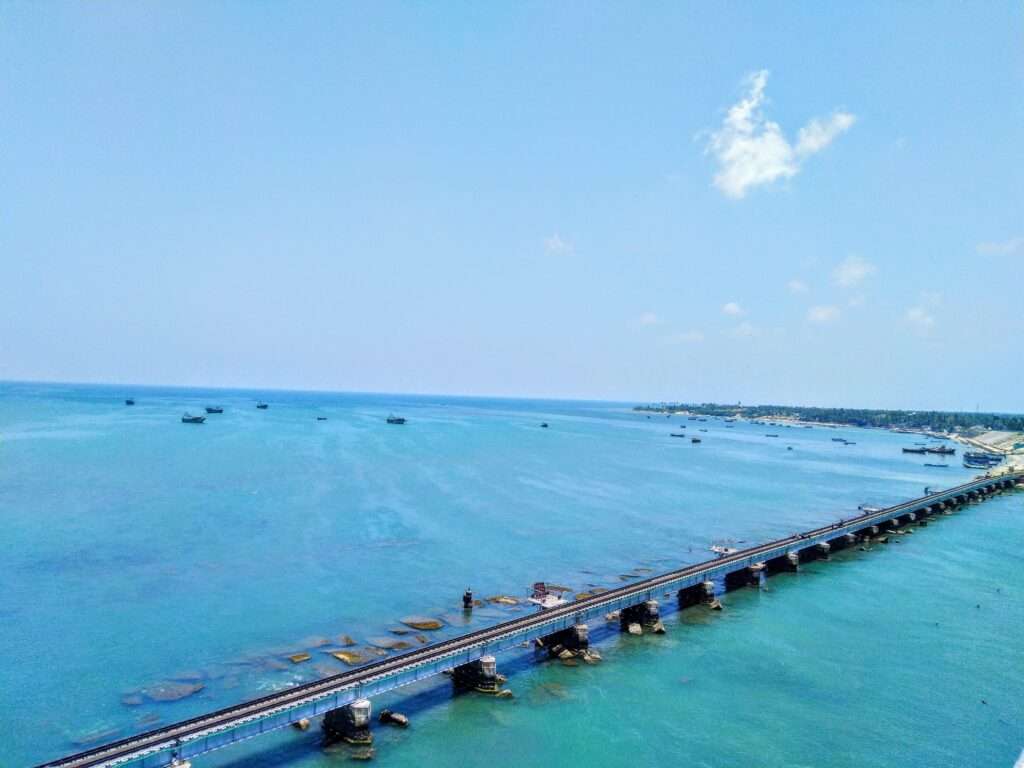
The Pampan Bridge, also known as the Pampan Railway Bridge, is a significant landmark in Rameswaram. Built in 1914, it was India’s first sea bridge, connecting the city to mainland India. The bridge is about 2.3 kilometers long, 12.5 meters above sea level, and has a bascule area that can be raised for passing ships.
It offers stunning views of the ocean and surrounding landscape. As an iconic structure, it has become a popular tourist destination in Rameswaram, attracting visitors to walk across or take a train ride to enjoy the scenic beauty and witness the bridge opening for passing ships.
Ramanathaswamy Temple
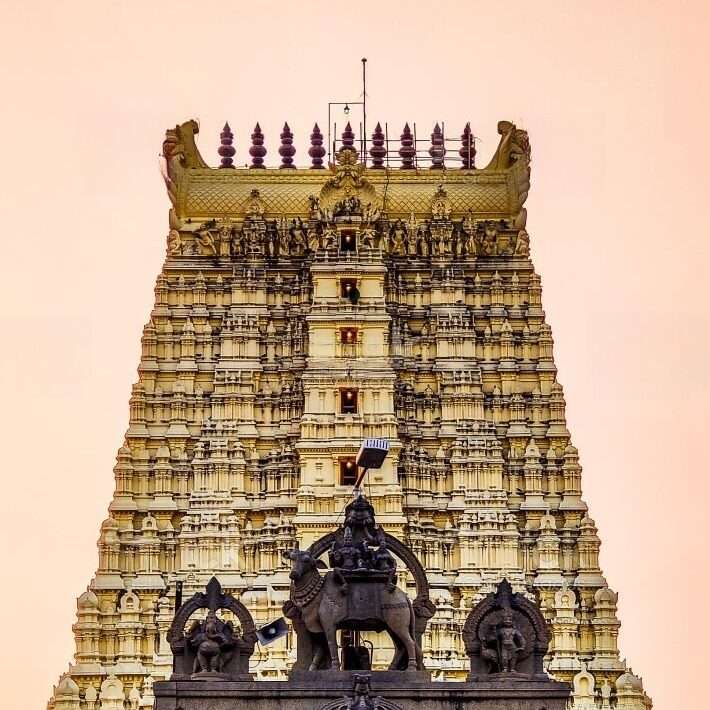
Rameswaram is an important pilgrimage site in Ramanathapuram for Hindus. It is believed that Lord Rama visited the town after his 14 years of forest life. Rameswaram serves as a Vaishnavatthalam, attracting both Saivas and Vaishnavas for worship.
The 22 Theerthas (sacred water bodies) are believed to offer salvation through bathing. The main temple, with a towering height of 38 meters, showcases magnificent carvings and is one of India’s 12 jyotirlingam temples. Rameswaram also draws tourists who often bathe in the nearby sea, Agnitheertha, before visiting the temple.
Agni Teertham
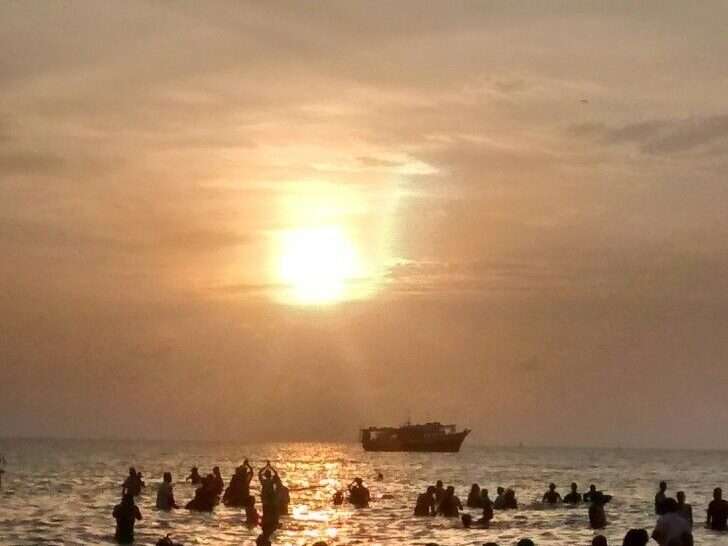
Agnitheertham is a holy pool located in Rameswaram, holding immense religious significance for Hindus as a prominent pilgrimage site.
Located on the east coast of Rameswaram Island, Agnitheertha is the believed site where Lord Rama and His devotees purified themselves of sins through a ritualistic bath before starting their journey to Sri Lanka. Bathing in Agnitirtha prior to visiting the nearby Ramanathaswamy Temple is considered an auspicious tradition.
Lakshmana Teertham
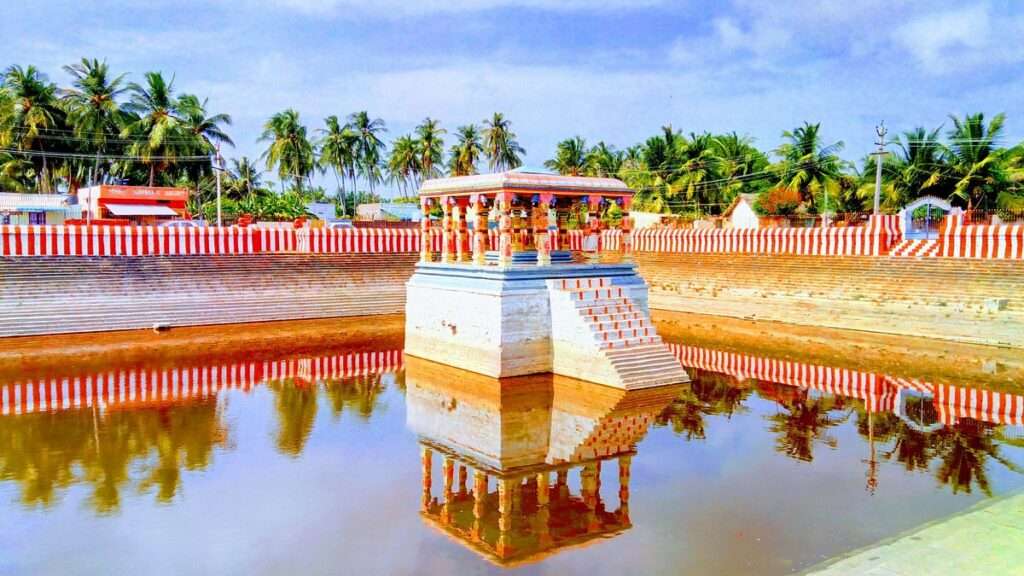
Lakshmana Theertha is a holy water tank or pool located in Rameswaram. The Lakshmana Theertha is a significant religious site associated with Hindu mythology and the epic Ramayana. It derives its name from Lord Rama’s younger brother, Lakshmana.
According to legend, Lakshmana, while searching for Goddess Sita, is believed to have created this body of water by shooting an arrow into the ground to quench Rama’s thirst. The pond is located near Ramanathaswamy Temple, one of the holiest temples in Rameswaram.
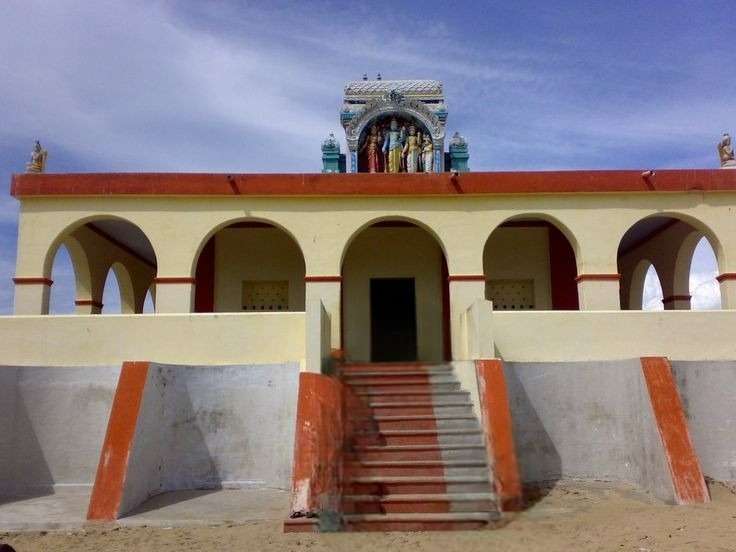
Kothandaramsamy Temple
The Kothandaramaswamy Temple, situated in Dhanushkodi town near Rameswaram, reveres Lord Rama, his wife Sita, and his faithful devotee Hanuman. The Dravidian style of architecture heavily influences the temple, characterized by intricate carvings and colorful sculptures.
Inside the sanctum sanctorum, one can find ancient idols of Rama, Sita, and Hanuman, which have been objects of worship for centuries. Devotees visit this popular pilgrimage site to seek the blessings of Lord Rama, pray, and engage in worship.
Abdul kalam House
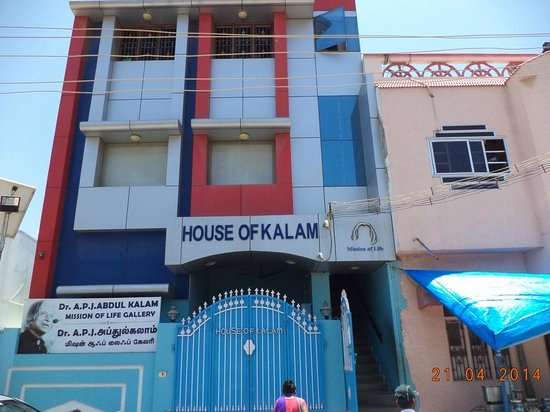
It is referred to as “Abdul Kalam House”. Dr. It holds great significance as Kalam’s birthplace and provides an insight into his early life and upbringing. It is a simple two storied building that shows Dr. Kalam’s humble beginnings. This house Preserved and converted into a museum displaying personal belongings, photographs and memorabilia related to his life.
Visitors to the Abdul Kalam House can explore various sections including the living areas, bedrooms and study room where Dr. Kalam spent a significant part of his childhood. Exhibitions are his upbringing, Provide insights into education and early influences. Visitors can also see copies of his awards, books and scientific contributions.
Abdul kalam Memorial Tourist Places in Rameshwaram
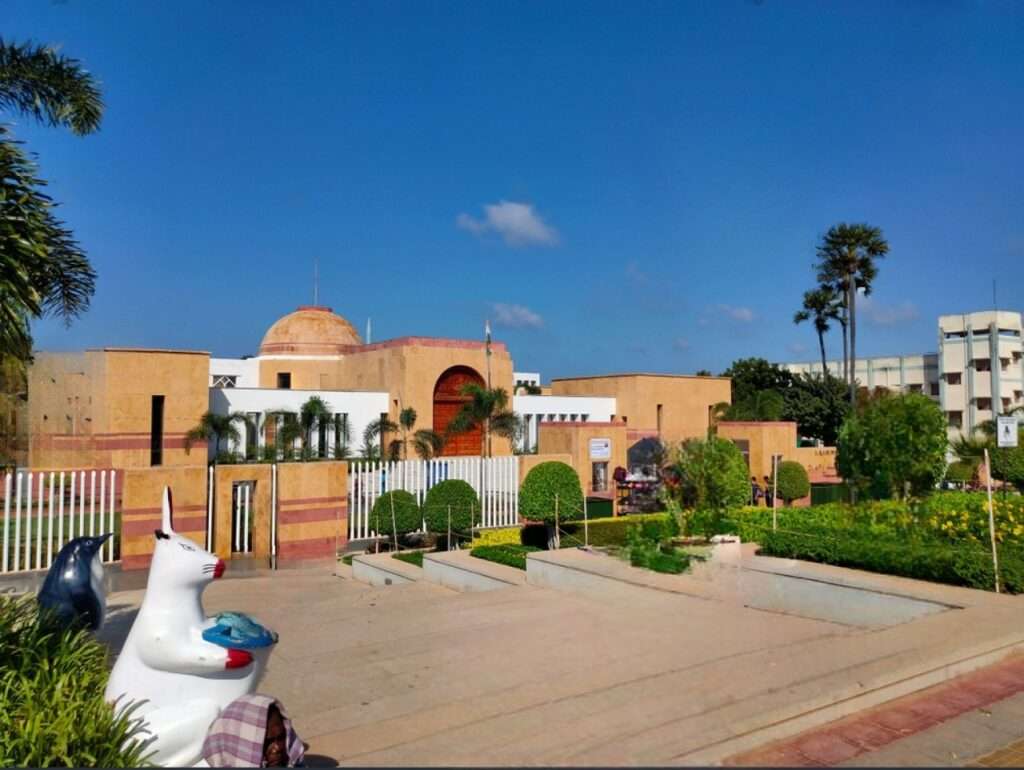
Abdul Kalam Memorial is located in Rameswaram, Tamil Nadu where he was born. Dr. A.P.J. Abdul Kalam was a renowned scientist, scholar and the 11th President of India. Missile of India He played an important role in the development and nuclear power projects.
Abdul Kalam Memorial is located at Bei Kanumbu, about 15 km from Rameswaram city center. Visitors to the memorial can see photographs related to Dr. Kalam’s early life, education, scientific endeavors and political career. And various sections to explore, including a gallery that displays artefacts. Dr. A.P.J. visited the Abdul Kalam Memorial at Rameswaram.
Dhanushkodi Tourist Places in Rameshwaram
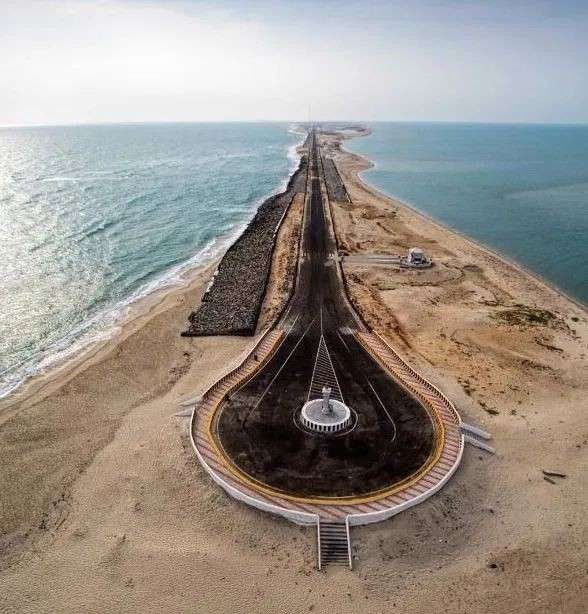
Dhanushkodi, located 20 kilometers away from Rameswaram, was once a thriving island with various amenities such as temples, shops, a railway station, a bus stop, and a post office. However, a devastating storm in 1964 completely destroyed the island, rendering it uninhabitable according to the government.
Now, Dhanushkodi serves as a museum, but a few fishermen families and traders still reside there, relying on tourists for their livelihood. The endpoint of Dhanushkodi, known as Arichal Point, offers stunning views. Visitors can enjoy local seafood, capture photos, collect sea shells, purchase souvenirs like sculpted conches, and even ride sand bikes for a fee of INR 100 per person. Dhanushkodi is a remarkable destination for tourists with its unique history and attractions.
Sita Theertham
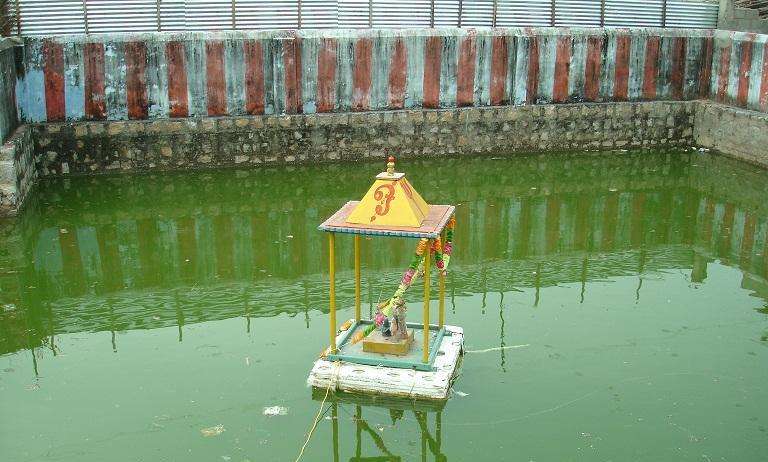
Sita Theertham is a natural fresh water tank located 2 km from Ramanathaswamy Temple. The water in the pond is considered sacred and believed to have healing properties.
Devotees bathe in holy water, blessings and visit this place to pray for spiritual purification. The surroundings of Sita Theertha are serene and beautiful, providing a serene environment for devotees to engage in prayer, meditation and reflection.
Floating Stone
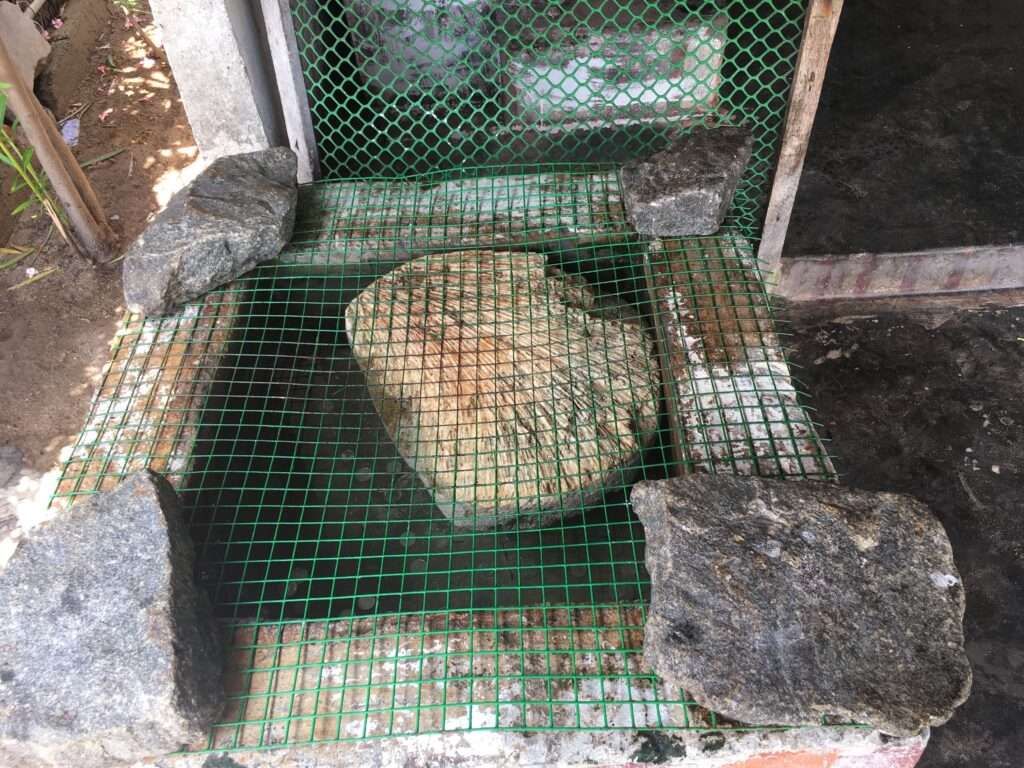
In Hindu mythology and the epic Ramayana, the concept of the “floating stone” originates from Lord Rama’s endeavor to construct a bridge from Rameswaram to Sri Lanka with the help of his army of vanaras (monkeys). The purpose of building this bridge was to rescue his wife, Sita, from the demon Ravana.
According to the belief, certain stones used in the bridge construction possessed the unique ability to float on water. These stones would float when placed in water, enabling the creation of the bridge. The idea of floating stones in Rameswaram adds an intriguing element to the mythology.
Adam’s bridge Tourist Places in Rameshwaram
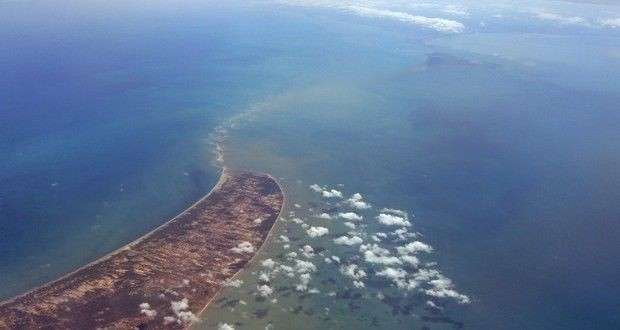
Adam’s Bridge, also called Rama Setu or Ram’s Bridge, is a significant geological formation connecting Rameswaram Island in India to Mannar Island in Sri Lanka. According to Hindu mythology, Lord Rama constructed this bridge using floating stones and rocks with the help of vanaras (monkeys) to rescue his wife Sita from the demon king Ravana.
Stretching for around 48 kilometers, the bridge consists of coral reefs, sandbars, and islands. It holds historical, religious, and archaeological importance, attracting tourists, researchers, and devotees. Visitors can experience the bridge’s beauty through boat rides or enjoying panoramic views from nearby locations in Rameswaram.
Five Faces Hanuman Temple
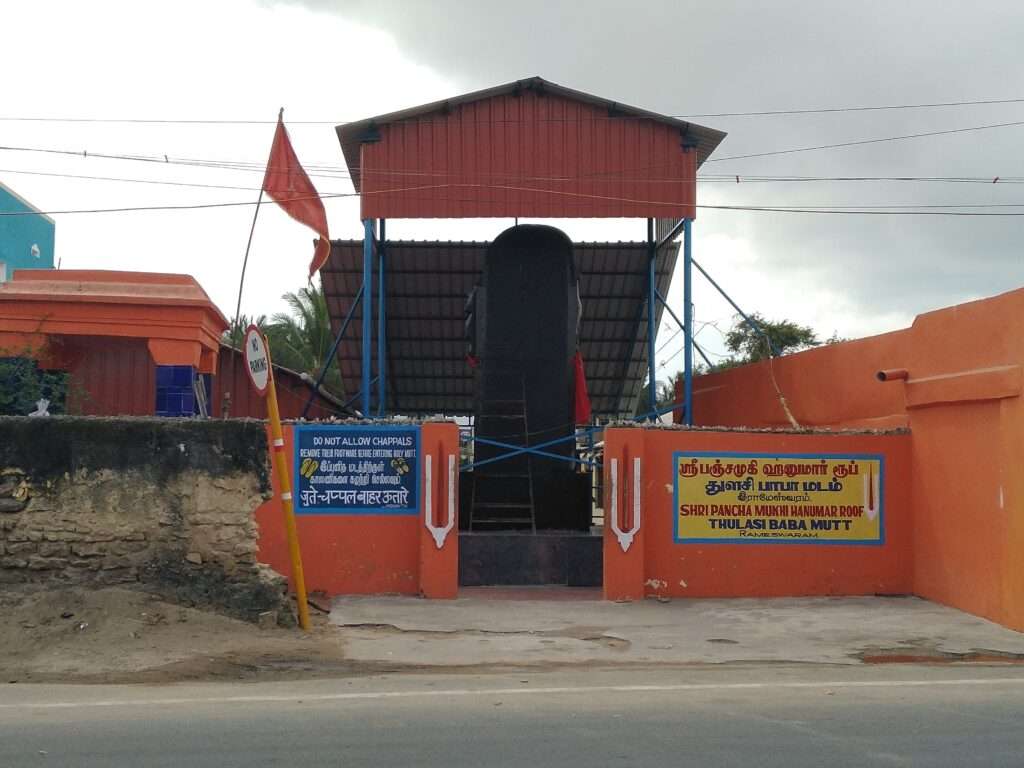
- East facing Hanuman: This face represents the form of Hanuman as Sri Hanuman
- South-facing Narasimha: This face represents Hanuman as Narasimha, the half-man, half-lion incarnation of Vishnu.
- West Facing Garuda: This face represents Hanuman’s association with Garuda, the divine vehicle of Vishnu.
- North facing Varaha: This face represents Hanuman as Varaha, the boar incarnation of Lord Vishnu.
- Hayagrivar: This face represents Hanuman as Hayagriva, the Hayagriva associated with knowledge and wisdom.
Ramar Patham
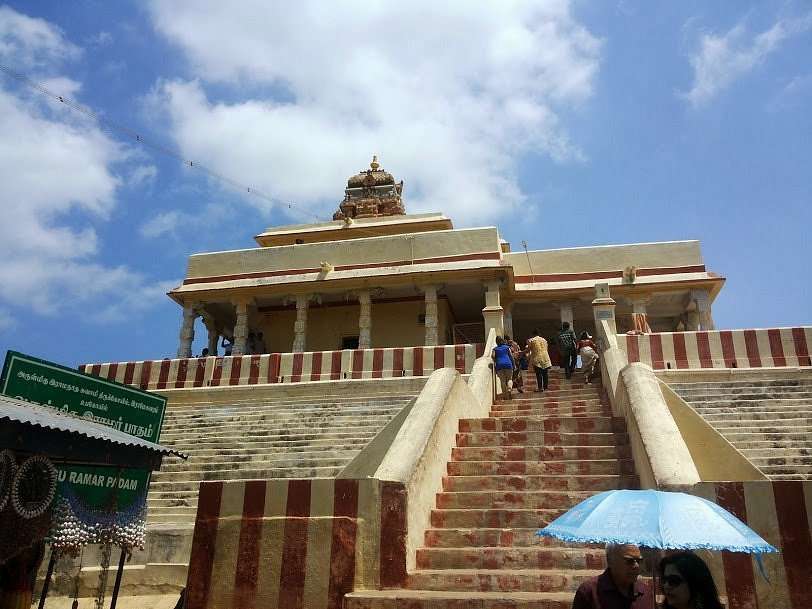
Ramapadam stands on the Kandhamadana Parvatam Hill, located around 3 km from the Rameswaram Ramanathaswamy Temple. It carries immense importance for devotees of the Hindu religion. In Tamil, “Ramar Padam” translates to “Rama’s Feet.” According to Hindu mythology, this hill symbolizes Sri Lanka, the very spot where Lord Rama’s feet touched the ground during His quest for a suitable location.
The site features a large footprint on a wheel (disc) carved in stone. Rameswaram attracts many visitors due to its peaceful environment and spiritual ambiance, appealing to those who appreciate the blend of natural beauty and religious devotion.





